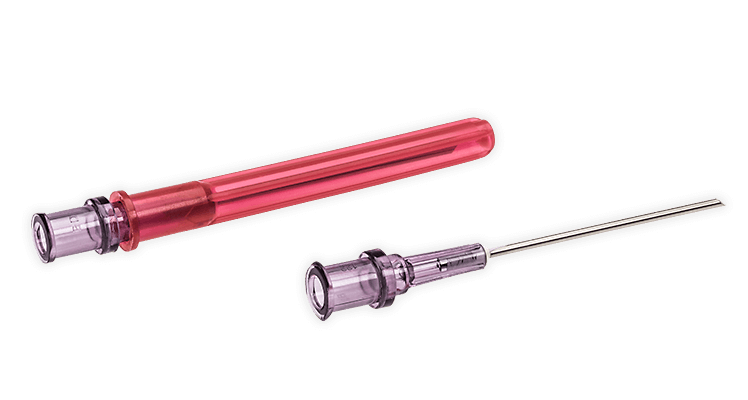
Use of 19G filtered needles resulted in no glass particles. The use of a filter needle is required when drawing up medication or solution from a glass ampule.

Additionally no relevant evidence-based guidelines were identified regarding the use of filtered needles to withdraw medication from glass ampoules.
Filtered needle for ampoule. Filter needle use with ampoules can reduce the risk of GPC. Pharmacy and nursing have established standards of practice to improve patient safety by reducing GPC when drawing medications from ampoules. Some Anesthesia professionals that regularly use ampoules do not routinely use filter needles when preparing medications from ampoules.
A filter needle has a 5 micron filter at the base of a syringe needle. The filter creates a one-way flow when withdrawing or injecting fluid into or from the syringe. The filter needle can be used either to withdraw or to inject but never for both.
It should only be pulled or pushed in one direction. What is a filter needle. A filter needle places a glass filtering device at the base of a syringe needle.
The filter creates a one-way flow when withdrawing or injecting fluid into or from the syringe. The filter needle can be used to either withdraw or inject but never for both it can only be pulled or pushed in one direction. Why do we need to use a Filter Needle.
The ampoule is opened by breaking the neck. The use of filter needles in aspirating parenteral medications from glass ampules was first recommended by Katz Borden and Hirscher 1973. This recommendation came from their observations during their anesthesia clinical practice that intravenous medications packaged in glass ampules often became contaminated with glass particles when opened.
Controlled trials or non-randomized studies were identified regarding filter versus non-filtered needles to withdraw medication from glass ampoules. Additionally no relevant evidence-based guidelines were identified regarding the use of filtered needles to withdraw medication from glass ampoules. Filter needles are needles with small glass filtering devices at the base of the needle.
Filter needles are typically used to filter tiny glass particles micro organisms or powder particles from your medication. For example when opening a glass ampoule tiny glass particles may get into the solution and risk being drawn up into the syringe. A filter needle prevents this and makes your injections a lot safer.
Filtered needles for withdrawing medication from glass ampoules. A review of the cost-effectiveness and incidence of complications Source. Centre for Reviews and Dissemination Health Technology Assessments - CRD HTA Add filter.
Many of the 2-mL ampoules produced multiple glass particles on opening. Use of 19G filtered needles resulted in no glass particles. There was a significant difference in mean particle size between the 18G and 21G groups of 2-mL ampoules.
The use of filter needles reduces the number of particles found in parenteral solutions after the opening of glass ampoules and has been recommended by many authors. Even so nurses do not use. Epinephrine from Ampule with Filtered Needles.
If playback doesnt begin shortly try restarting your device. A blunted filter needle or filter straw shall be used when drawing medication from glass ampules INS 2011 p. This standard is in agreement with both the USP and ASHP and should be practiced by all clinicians preparing medications from glass ampules including the.
BD blunt fill and blunt filter needles are specifically designed to reduce the risk for needlestick injuries during medication preparation. They reduce the need for a broad selection of conventional needles so you can drive efficiencies and cost reduction through SKU standardization. A filter needle or filter straw is a needle attached to a syringe in place of a drawing up needle designed to filter out particulates from a contaminated fluid.
Generally they contain a 5 micron filter. Glass ampoules are widely used in the production of parenteral medications. Sep 29 2009.
Ive drawn up injectable medications from ampules without having ever used a filter needle. I was taught to do so without the use of a filter needle. In fact I had never even heard of a filter needle until I stumbled upon this thread.
LOL maybe more like a breaking point. Even though they describe the breaking techniques for the scored ampoules to get clean breaks they still advocate the use of filtered needles. It says that even with clean breaks minute glass particles may occur.
They even suggest to tilt and keep the ampoule upside down during drawing. The use of a filter needle is required when drawing up medication or solution from a glass ampule. This allows any glass particles to be filtered out of the sol ution before using that solution in a patient or final product.
A filter needle looks like a standard needle but contains a filter in its base usually 5 micron. Vials shouldnt need filter needles ampoules might. If your concern is material breaking off as you snap the ampoule open and it falling into the drug inside.
Blunt filter needles or filter straws with a 5 micron filter should be available and used each and every time a medication is aspirated from a glass ampoule to reduce glass particle contamination Such action will promote patient safety and reduce the risk of patient harm. Use of 19G filtered needles resulted in no glass particles. There was a significant difference in mean particle size between the 18G and 21G groups of 2-mL ampoules.
Our results support the existing literature in that larger bore unfiltered needles increased the risk of aspirating more glass and other particles than smaller bore or filter needles.